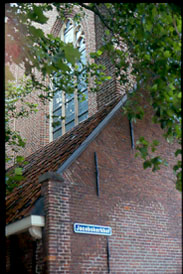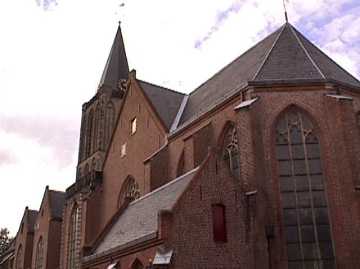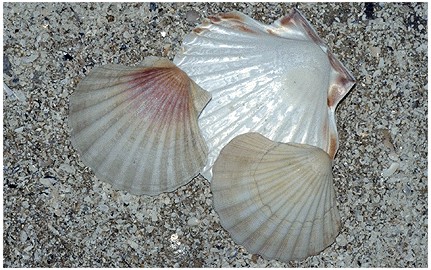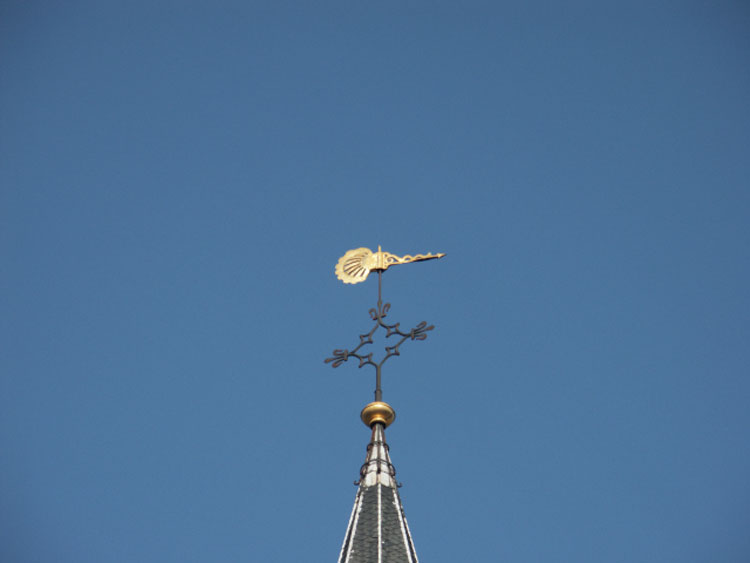Utrecht



Op de toren van de Jacobikerk aan het Jacobskerkhof in Utrecht staat een Jacobsschelp.



 foto's augustus 1991 en maart 2003
foto's augustus 1991 en maart 2003 | |
 | Utrecht (U): Jacobikerk (voormalige website) Lying a bit hidden behind a part of Utrecht's centre that is completely spoiled by modern buildings is this church. Once one of Utrecht's four parish churches, now a reformed church. The Jacobikerk (St. James church) is a late-Gothic hall-church consisting of three aisles of equal height and width, each with a choir and vaulted in stone except for a small part. The tower is enclosed on all of its four sides. Although the church has a transept, it does not extend the overall width of the building. |
 De Jacobsschelp is, wereldwijd bekeken, het belangrijkste schelpdier voor de visserij. In 1990 voerde men wereldwijd
0,57 miljoen ton aan, in 1992 was dat 0,74 miljoen ton en in 1994 1,3 miljoen ton.
De Jacobsschelp is, wereldwijd bekeken, het belangrijkste schelpdier voor de visserij. In 1990 voerde men wereldwijd
0,57 miljoen ton aan, in 1992 was dat 0,74 miljoen ton en in 1994 1,3 miljoen ton.